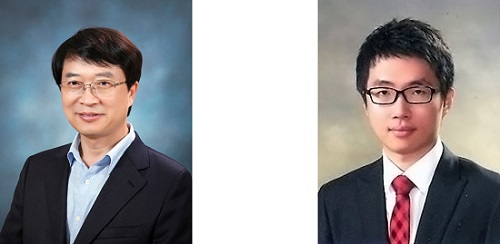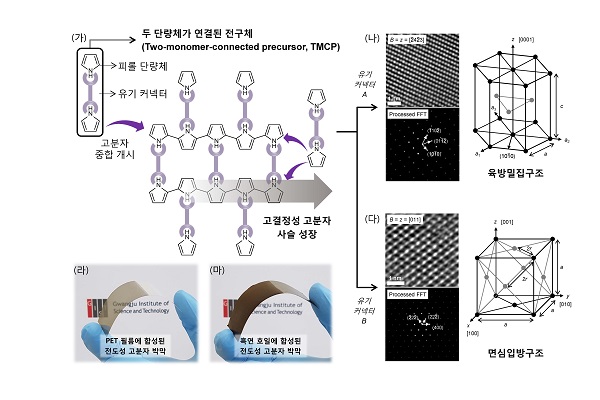Media Center
A multimedia mosaic of moments at GIST
GIST Excellence
[Press release] Professor Jae-Suk Lee leads research team to develop electrically conductive crystalline polymers by using two-monomer-connected precursors
- 엘리스 리
- REG_DATE : 2016.09.27
- HIT : 1254
Professor Jae-Suk Lee leads research team to develop electrically conductive crystalline polymers by using two-monomer-connected precursors

A polymer is a large molecule that is comprised of a long chain of smaller molecules known as monomers, which can bond with other identical molecules to form a polymer. However, monomers polymerize in a linear dimension, which often creates structural entanglements within the polymer that limits its functionality to either transfer or store particles, such as electrons, ions, or gasses. This has led to the development of two-dimensional polymers with well-ordered structures as well as to the development of crystalline polymers. However, crystalline polymers require the use of complex and expensive synthetic methods to produce, making them more expensive.
To address the issue of structural entanglements with polymers and the issue of more expensive production methods for crystalline polymers, Professor Jae-Suk Lee of the School of Materials Science and Engineering at the Gwangju Institute of Science and Technology (GIST) has led a research team to develop highly crystalline conjugated polymers using two-monomer-connected precursors (TMCPs), producing crystalline structures at the molecular scale that also inhibit structural entanglements.
To achieve this molecular-level crystallinity, the researchers synthesized the polymer Py:DSA:Py using conventional pyrrole (Py) as the monomer and various disulfonic acids (DSAs) to serve as the connector and dopant. This resulted in a considerable increase in electrical conductivity because of the closely-packed crystalline structure, which is 35 times more conductive than unconnected polypyrrole (PPY).

The figure shows the chemical oxidative polymerization of a TMCP, avoiding chain entanglement, the molecular structures of the connectors, the acid–base interaction forming ionic bonds between the Py and connectors, and HRTEM and processed FFT images of P(Py:EDSA:Py) measured along different zone axes.
Their paper entitled "Close-packed polymer crystals from two-monomer-connected precursors" was authored by Hong-Joon Lee, Yong-Ryun Jo, Santosh Kumar, Seung Jo Yoo, Jin-Gyu Kim, Youn-Joong Kim, Bong-Joong Kim, and Jae-Suk Lee and was published on September 19, 2016 by Nature Communications.
Professor Jae-Suk Lee said, "Our research has developed a new strategy to control polymerization at the molecular level, and this has the potential to revolutionize the production of synthetic polymers for application in wide variety of fields, such as electronics, energy, and materials manufacturing. And further analysis of existing polymers will hopefully find new ways to maximize the performance of their electrical conductivity."